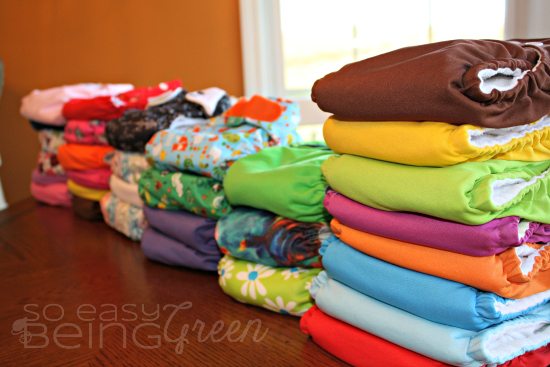It really depends on the person you ask whether diaper rashes tend to occur more or less often in cloth diapers vs disposables. If you're currently battling a rash, you may tend to lean on the side of more, but most cloth experts {where their stats come from, who knows!} tend to say that rashes occur less often in cloth.
No matter, like I said, if you're in the midst of battling a diaper rash, it can seem overwhelming when all you want is to make it go away!
Honestly, I feel like the cloth diapering community tends to over think some things when it comes to cloth diapers. Diaper rashes in cloth should be approached in the same ways that a disposable diapering parent would approach the same issue.
First step in dealing with a diaper rash is to identify the rash and culprit. If your rash is Yeast, that's a whole other ball game. But normal rashes can be caused by a multitude of issues and it's best to identify the cause so you can stop it from recurring. Some of the most common causes of diaper rash in cloth diapers are:
- Are your cloth diapers clean? Sometimes you may be using such little detergent that bacteria is actually hanging around your diapers.
- Using too much detergent? Maybe your diapers have build-up? Stripping your cloth diapers can help in this situation.
- Baby is Teething or is Sick.
- Prolonged wet or dirty diaper.
- Allergic Reaction to Fabrics {could be synthetic, fleece, PUL, etc.}
If it's possible to identify the reason for the rash, the worst part is over because you now know how to help it from happening again. But what do you do now to get the rash gone for good?
- Change your baby's diaper often.
- Use a good, cloth safe diaper cream. One of my favorites just happens to be Coconut Oil! It's a solid, but melts at body temperature and is water soluble so it washes right out in your cloth diaper laundry.
- Use a disposable or reusable fleece liner. Not only will the liners help keep baby's bottom a little more dry, they're also a great barrier for cloth creams {that are both safe for cloth diapers and some that aren't}. If you use a cream that isn't safe for your diapers, just be sure to wash the reusable liners separately than your diapers. Here are some great tips on making your own reusable liners.














So nice post! I just love your blog. Most cloth diapers use natural woven fibers like cotton and fleece. These fibers excellently absorb wetness. Disposable diapers use crystals made of harmful chemicals to absorb wetness. I always use cloth diapers because my baby's skin is very sensitive.
ReplyDeleteBaby cloth diapers